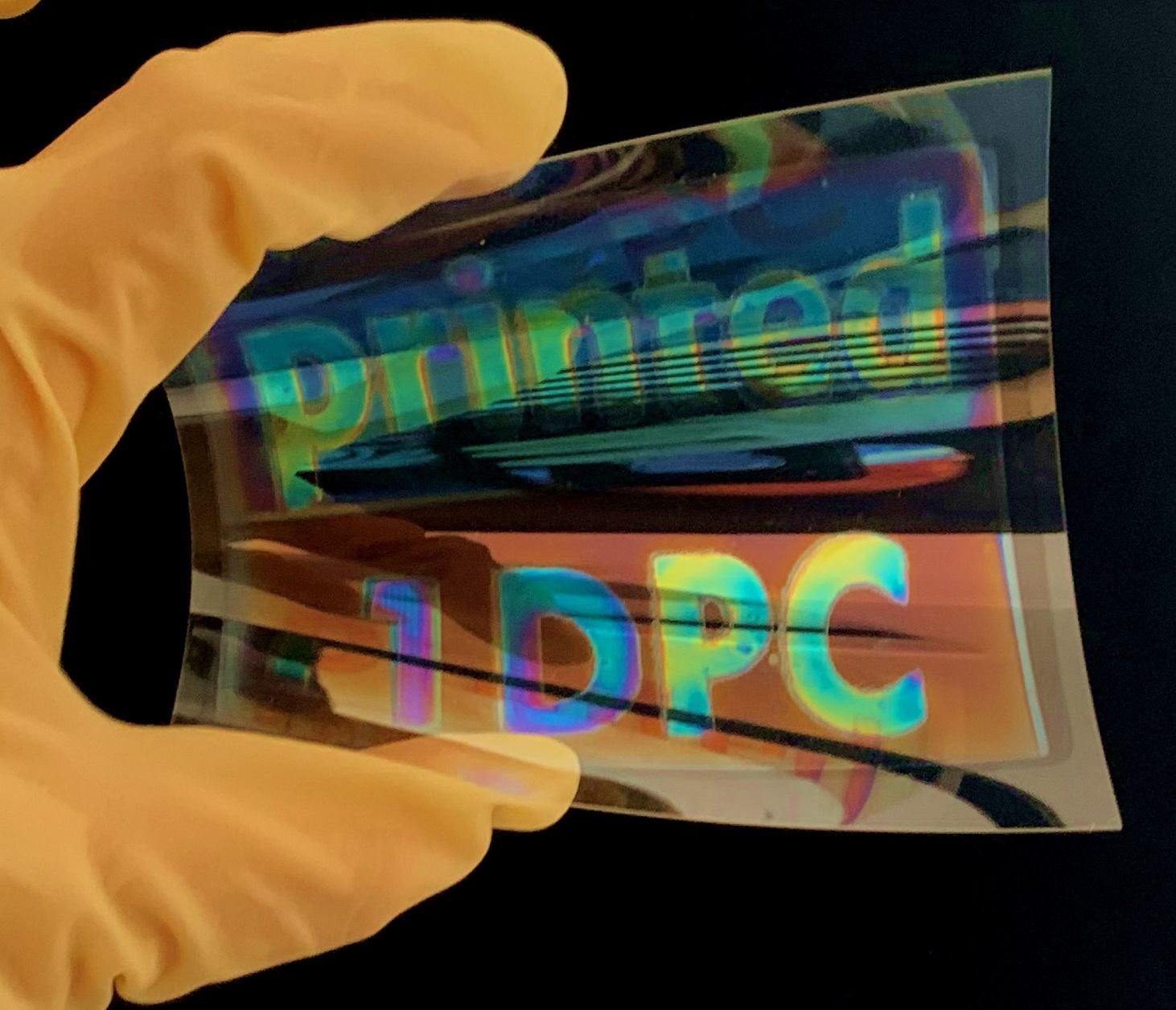07.09.2022
Dielectric mirrors, also referred to as Bragg mirrors, reflect light nearly completely. Hence, they are suited for various applications, such as camera systems and sensor systems for microscopy and medical technologies. So far, such mirrors have been produced by complex processes in expensive vacuum devices. Researchers from Karlsruhe Institute of Technology (KIT) now are the first to print Bragg mirrors of high quality with inkjet printers. This may pave the way towards the digital manufacture of customized mirrors. Research results are published in Advanced Materials (DOI: 10.1002/adma.202201348).
Bragg mirrors are produced by applying several thin layers of materials onto a carrier. The resulting optical mirror specifically reflects the light of a certain wavelength. Reflectivity of a Bragg mirror depends on the materials, the number of layers applied, and their thicknesses. So far, Bragg mirrors have been produced in expensive vacuum production facilities. KIT researchers now were the first to print them on different carriers. This largely facilitates production.
Inks Made of Nanoparticles
“It was a big challenge to develop suitable inks and to establish a reliable process for the production of several thin layers,” says Professor Uli Lemmer from KIT’s Light Technology Institute (LTI), who heads the project that is part of the “3D Matter Made to Order“ cluster of excellence. The constituents of the inks must have suitable optical properties and be soluble. Moreover, every layer should be as homogeneous as possible in order to obtain a consistent stack of layers. Pressure must be controlled precisely and results must be reproducible to guarantee excellent optical properties and a high reflectivity of the Bragg mirrors. The research team decided to use nanoparticles. “Thanks to the rapid development of nanochemistry, nanoparticles are getting cheaper and more diverse,” Lemmer says. His team used a mix of two different materials, titanium oxide and polymethyl methacrylate, as optical components of the inks. Using the inks, researchers succeeded in producing extremely precise optical properties and thicknesses of the layers. “We reached a very high reflectivity of 99 % with ten double layers only,” Lemmer says.
Printing on Large and Small Areas
The method developed by the researchers from LTI may be used on very small areas down to ranges of a few micrometers, enabling production of optical components for microsystems technologies or camera systems. On the other hand, large areas of some square meters can be printed for solar modules, facades, and advertising displays. Such mirrors have even been printed on flexible plastic foils. “The completely digital process enables fabrication of mirror layers that are precisely adjusted to the application. This is a great advantage compared to conventional fabrication methods,” Lemmer points out. (rli)
Original Publication
Q. Zhang, Q. Jin, Q. A. Mertens, C. Rainer, R. Huber, J. Fessler, G. Hernandez-Sosa, U.Lemmer, “Fabrication of Bragg Mirrors by Multilayer Inkjet Printing”. Advanced Materials 34, 2201348 (2022). DOI: 10.1002/adma.202201348
https://onlinelibrary.wiley.com/doi/full/10.1002/adma.202201348
More about the KIT Center Materials in Technical and Life Sciences: https://www.kit.edu/themen/materialien.php















